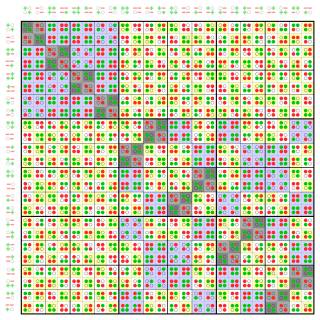This article relies largely or entirely on a single source .(June 2015) |
| ||||
|---|---|---|---|---|
← 0 [[{{#expr:{{{1}}}*{{{factor}}}*1000}} (number)|{{#ifeq:{{{1}}}|10|→|{{#expr:{{{1}}}*{{{factor}}}}}k}}]] [[{{#expr:{{{1}}}*{{{factor}}}*1000}} (number)|{{#ifeq:{{{1}}}|10|→|{{#expr:{{{1}}}*{{{factor}}}}}k}}]] [[{{#expr:{{{1}}}*{{{factor}}}*1000}} (number)|{{#ifeq:{{{1}}}|10|→|{{#expr:{{{1}}}*{{{factor}}}}}k}}]] [[{{#expr:{{{1}}}*{{{factor}}}*1000}} (number)|{{#ifeq:{{{1}}}|10|→|{{#expr:{{{1}}}*{{{factor}}}}}k}}]] [[{{#expr:{{{1}}}*{{{factor}}}*1000}} (number)|{{#ifeq:{{{1}}}|10|→|{{#expr:{{{1}}}*{{{factor}}}}}k}}]] [[{{#expr:{{{1}}}*{{{factor}}}*1000}} (number)|{{#ifeq:{{{1}}}|10|→|{{#expr:{{{1}}}*{{{factor}}}}}k}}]] [[{{#expr:{{{1}}}*{{{factor}}}*1000}} (number)|{{#ifeq:{{{1}}}|10|→|{{#expr:{{{1}}}*{{{factor}}}}}k}}]] [[{{#expr:{{{1}}}*{{{factor}}}*1000}} (number)|{{#ifeq:{{{1}}}|10|→|{{#expr:{{{1}}}*{{{factor}}}}}k}}]] [[{{#expr:{{{1}}}*{{{factor}}}*1000}} (number)|{{#ifeq:{{{1}}}|10|→|{{#expr:{{{1}}}*{{{factor}}}}}k}}]] [[{{#expr:{{{1}}}*{{{factor}}}*1000}} (number)|{{#ifeq:{{{1}}}|10|→|{{#expr:{{{1}}}*{{{factor}}}}}k}}]] | ||||
| Cardinal | One thousand four hundred [and] fifty-eight | |||
| Ordinal | 1458th (one thousand four hundred fifty-eighth) | |||
| Factorization | 2 × 36 | |||
| Divisors | 1, 2, 3, 6, 9, 18, 27, 54, 81, 162, 243, 486, 729, 1458 | |||
| Greek numeral | ,ΑΥΝΗ´ | |||
| Roman numeral | MCDLVIII | |||
| Binary | 101101100102 | |||
| Ternary | 20000003 | |||
| Quaternary | 1123024 | |||
| Quinary | 213135 | |||
| Senary | 104306 | |||
| Octal | 26628 | |||
| Duodecimal | A1612 | |||
| Hexadecimal | 5B216 | |||
| Vigesimal | 3CI20 | |||
| Base 36 | 14I36 | |||
1458 is the integer after 1457 and before 1459.
The maximum determinant of an 11 by 11 matrix of zeroes and ones is 1458. [1]
Hadamard's maximal determinant problem, named after Jacques Hadamard, asks for the largest determinant of a matrix with elements equal to 1 or −1. The analogous question for matrices with elements equal to 0 or 1 is equivalent since, as will be shown below, the maximal determinant of a {1,−1} matrix of size n is 2n−1 times the maximal determinant of a {0,1} matrix of size n−1. The problem was posed by Hadamard in the 1893 paper in which he presented his famous determinant bound and remains unsolved for matrices of general size. Hadamard's bound implies that {1, −1}-matrices of size n have determinant at most nn/2. Hadamard observed that a construction of Sylvester produces examples of matrices that attain the bound when n is a power of 2, and produced examples of his own of sizes 12 and 20. He also showed that the bound is only attainable when n is equal to 1, 2, or a multiple of 4. Additional examples were later constructed by Scarpis and Paley and subsequently by many other authors. Such matrices are now known as Hadamard matrices. They have received intensive study.
1458 is one of three numbers which, when its base 10 digits are added together, produces a sum which, when multiplied by its reversed self, yields the original number:
- 1 + 4 + 5 + 8 = 18
- 18 × 81 = 1458
The only other non-trivial numbers with this property are 81 and 1729, as well as the trivial solutions 1 and 0.
81 (eighty-one) is the natural number following 80 and preceding 82.
1729 is the natural number following 1728 and preceding 1730. It is known as the Hardy-Ramanujan number, after an anecdote of the British mathematician G. H. Hardy when he visited Indian mathematician Srinivasa Ramanujan in hospital. He related their conversation:
I remember once going to see him when he was ill at Putney. I had ridden in taxi cab number 1729 and remarked that the number seemed to me rather a dull one, and that I hoped it was not an unfavourable omen. "No," he replied, "it is a very interesting number; it is the smallest number expressible as the sum of two cubes in two different ways."






